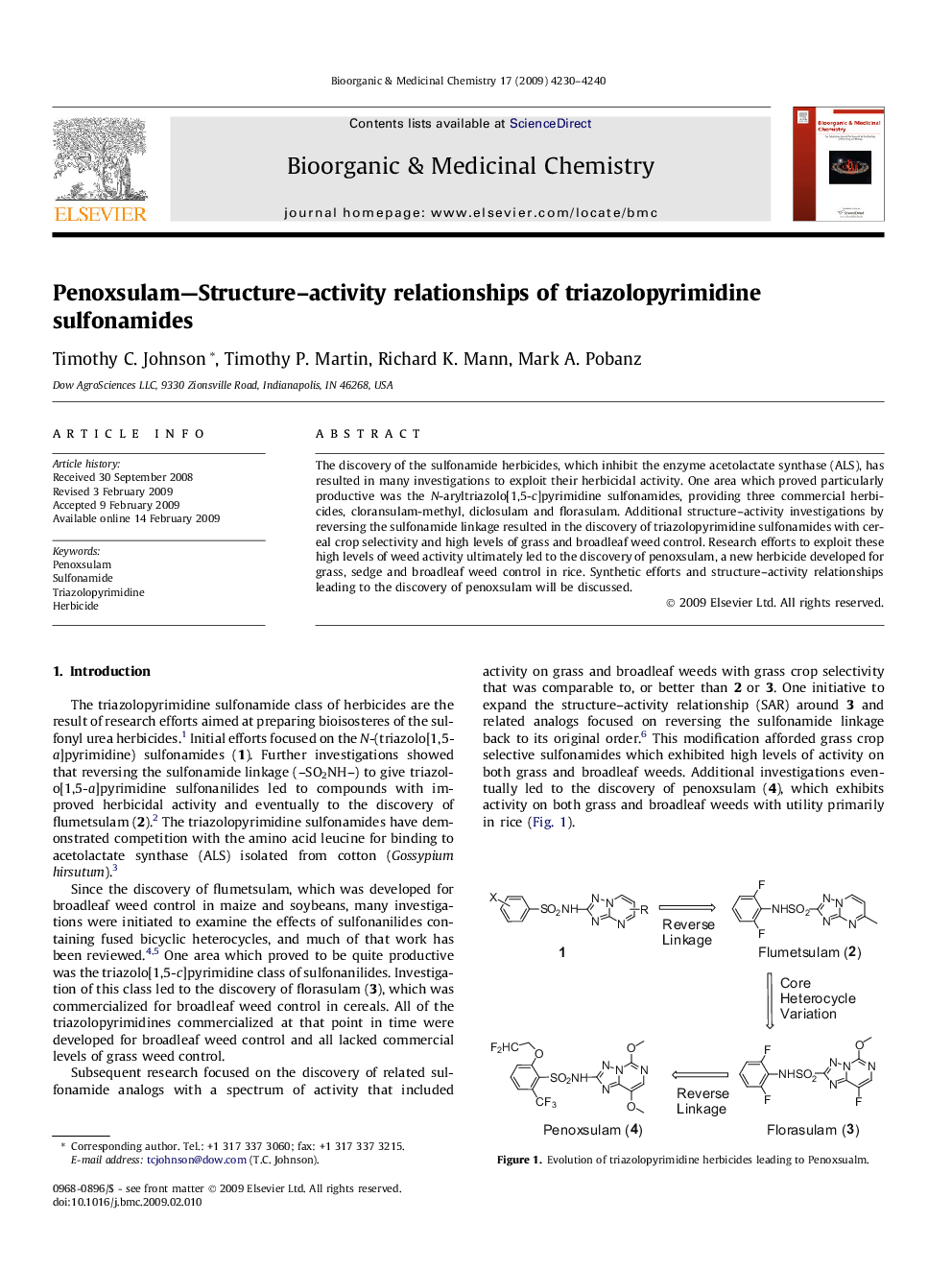| کد مقاله | کد نشریه | سال انتشار | مقاله انگلیسی | نسخه تمام متن |
|---|---|---|---|---|
| 1363312 | 981509 | 2009 | 11 صفحه PDF | دانلود رایگان |

The discovery of the sulfonamide herbicides, which inhibit the enzyme acetolactate synthase (ALS), has resulted in many investigations to exploit their herbicidal activity. One area which proved particularly productive was the N-aryltriazolo[1,5-c]pyrimidine sulfonamides, providing three commercial herbicides, cloransulam-methyl, diclosulam and florasulam. Additional structure–activity investigations by reversing the sulfonamide linkage resulted in the discovery of triazolopyrimidine sulfonamides with cereal crop selectivity and high levels of grass and broadleaf weed control. Research efforts to exploit these high levels of weed activity ultimately led to the discovery of penoxsulam, a new herbicide developed for grass, sedge and broadleaf weed control in rice. Synthetic efforts and structure–activity relationships leading to the discovery of penoxsulam will be discussed.
Investigations of the triazolopyrimidine SAR led to the discovery of penoxsulam, a new herbicide developed for grass, sedge and broadleaf weed control in rice.Figure optionsDownload as PowerPoint slide
Journal: Bioorganic & Medicinal Chemistry - Volume 17, Issue 12, 15 June 2009, Pages 4230–4240